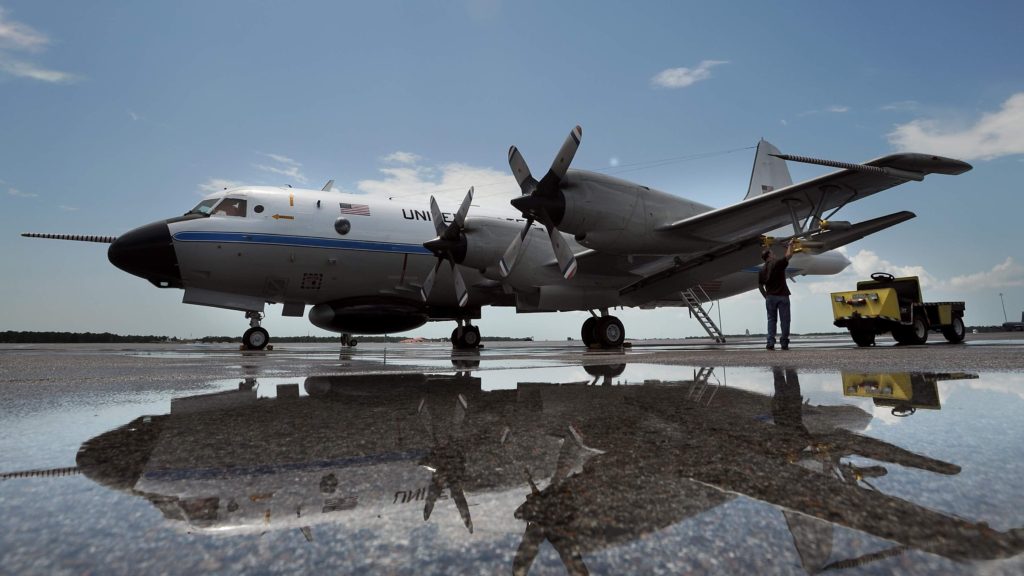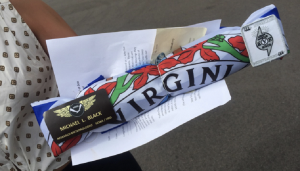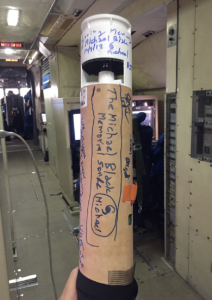
A meteorologist that played an important role in improving hurricane forecasts died unexpectedly in 2017. In a special in-flight ceremony, his cremated remains were dispersed into Hurricane Michael over the Gulf of Mexico last fall.
Meteorologist Michael Black worked with the Hurricane Research Division (HRD) of the American Oceanographic and Meteorological Laboratory (AOML), which is part of the Oceanic and Atmospheric Research (OAR) office of the National Oceanic and Atmospheric Administration (NOAA.) According to the HRD, Black’s pioneering research on Doppler radar and the use of Global Positioning System (GPS) dropsondes helped create new methodologies to better assess the strength of tropical cyclones such as tropical storms and hurricanes.
According to NOAA, after Black passed away at age 62, his family requested that his ashes be released into a hurricane. “This is a special honor bestowed on only a few individuals who have been involved in hurricane research and/or operations,” the HRD said in an article they posted to their website.

The 13th named storm of the 2018 Atlantic hurricane season was named “Michael”, setting the stage for a touching tribute of dispersing Michael Black’s ashes into a storm that shared his name. On October 9, 2018, Brinn Black, Black’s oldest daughter, carried her father’s ashes onto NOAA’s hurricane hunter aircraft. According to the HRD, Black’s ashes were wrapped in the state flag of Virginia, the state of his birth. Because Black had flown through the eyes of more hurricanes than anyone else within the HRD, his flight-suit name tag and Senior Master Eye Rover patch were included with the flag and ashes. The Senior Master Eye Rover patch was issued to Black to commemorate more than 400 hurricane eye penetrations he participated in.
According to the HRD, during a pass into the eye of Hurricane Michael, the crew called for a moment of silence. Aircraft Operations Center technician Michael McAlister read a special eulogy prayer in Black’s honor. Soon after, Black’s flag-wrapped ashes were placed into a dropsonde chute and released.

After his ashes were deployed, scientists on-board prepared to deploy a special memorial dropsonde into Hurricane Michael in Black’s honor. The dropsonde, a device that measures barometric pressure, temperature, humidity, wind speed, and wind direction, is dropped into the storm, capturing data as they pass through the atmosphere to the ocean. Black was instrumental in linking GPS to dropsonde data.
The “Michael Black Memorial Sonde” was signed by everyone on the flight before being released into the powerful winds of Hurricane Michael’s eyewall. Data captured by it helped meteorologists with the National Hurricane Center in Miami, FL with their analysis and forecast of the storm.
HRD began sixty years ago as the National Hurricane Research Project and has, under various names, continued to conduct scientific research into hurricanes and related tropical weather phenomena, using theoretical studies, computer models, and an annual field program employing NOAA hurricane research aircraft. This research has resulted in a deeper, scientific understanding and in numerous practical applications which have improved forecasts. HRD employs meteorologists, computer scientists, and other professionals, who collaborate with other governmental and academic scientists worldwide in this ongoing effort to advanced scientific knowledge and increase public safety.